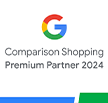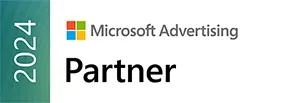At the very beginning it is worth pointing out that marketing goals are not always the same as sales or business goals. A strong brand supports sales, but when you conduct branding activities, you will not measure their effectiveness by the number of products sold or leads generated. Of course you can try, but you will quickly come to the conclusion that your campaigns are ineffective, especially if you look at the last interaction in the customer’s purchasing path.
You can choose the goals depending on the stage in the marketing funnel where your customers are, or the micromoments, which are their intentions. Let’s discuss both models below.
Marketing funnel – stages in the customer’s purchasing path
The sales funnel is a visualization of the user’s path from the first interaction with the brand to the purchasing stage and beyond.
- The first element on the path in most models is brand awareness and reach, meaning the moment when the customer acquires knowledge about the company, realizing its existence.
- The second element is the interest, where the customer is considering a possible purchase of a product or service.
- The third stage is the desire, which is the state before the transaction is finalised, a critical moment for most businesses. In some types of campaigns we can talk about a warmer lead.
- The penultimate stage is the purchase. Contrary to what many marketers think, this is not the last stage.
- The last stage is the loyalty, meaning the customer’s willingness to recommend the company to acquaintances and to buy again.
The marketing goals for each stage will be different. Measuring the effectiveness of all activities with the same measure may result in drawing wrong conclusions and giving up forms of promotion that are actually effective.
Brand awareness and reach
According to the Google CEE and IPSOS report published in September 2018, the e-commerce client is characterized by being spontaneous and enjoys direct contact. On the other hand, before he or she starts looking for specific products online, has brands offering the solutions he or she needs in the back of his or her head. This means that brand awareness and reach have a strong influence on purchasing decisions.
A strong brand has a significant impact on the company’s sales results. Big brandy is aware of that and that’s why they spend huge amounts of money on advertising in the press and television year after year.
If your budget is limited, you can take advantage of alternative forms of promotion that the Internet provides. Video advertising on YouTube and Facebook, programmatic, content marketing… these are much cheaper channels than TV advertising and have the same goal – to reach the largest possible audience with the broadcast message.
You can of course give up branding and focus on prospecting actions from the very beginning. Just remember that prospecting campaigns do not sell by themselves, they only increase your online exposure. By creating a Google Ads search network campaign or Facebook Lead Ads, you only make it easier for the user to reach you. Whether they will take advantage of your offer is a completely different matter.
The indicators you should pay attention to when running reach campaigns are: reach, engagement and frequency. These are data available in most advertising panels. Reach will tell you how many people have seen your creation. Engagement will tell you if users are paying attention to your creation. Frequency will tell you how often you reach a unique user with your message, that is, how many times one person has seen your advertisement.
Google Ads also allows you to measure conversions when they are displayed. This works in such a way that if a user sees an advertisement at any stage of his path, the system will consider that it has positively influenced his decision and will assign the merit of the graphic advertisement for causing the sale. The precision of this type of data may vary, but it can be treated as an auxiliary tool to assess the effectiveness of advertising activities. To access the conversion after display, you need to create a target via the conversion tag from Google Ads. Targets imported from Google Analytics do not have this functionality.
Another, although more expensive, solution is Brand Lift campaigns. These are special campaigns on YouTube enriched with questionnaires with previously prepared questions. After the end of the campaign, the system selects two groups of recipients: users who have seen the advertisement and those who have not seen it. Then both groups display the same set of questions. This may be a question of the following type: Where would you buy a smartphone in the first place? In Company A, Company B, Company C or Company D? This allows you to check whether people who have seen the advertisement are more responsive to the mention of your brand than people who haven’t seen it. At present, a weekly budget of $5,000 is required to launch a Brand Lift campaign. The campaign must last at least seven days.
Interest
The easiest way to keep track of the increase in interest is to follow the number of subscribers to the mailing database, the growth of the Facebook community, YouTube channel subscribers or blog readers. It is also worth knowing whether your advertisement makes customers more willing to engage in the content available on the site.
The easiest indicator to measure interest in the offer will be the number of sessions in Google Analytics. The session is a unique visit and lasts 30 minutes by default. In the settings you can extend the maximum duration of the session to 4 hours, which will be sufficient for most portals. Nevertheless, you should have in the back of your head that each session is limited.
Many people working on improving engagement focus on bounce rate and average session duration. These are not the best indicators. First of all, a high bounce rate doesn’t always mean something bad. A high rate of single-page visits is very often in the case of e-commerce stores, because customers after becoming familiar with the product description and its price do not feel the need to further explore the site.
The average session duration is also imprecise because it does not count the time spent by the user on the last page. Analytics is not able to collect data from a pageview that was not followed by another interaction. If someone spent 5 minutes on three tabs on your site and left the page, in GA you will see the session duration of 10 minutes (i.e. time without data from the last subpage). This is a big problem, considering the fact that we spend the most time statistically on the last page, because there is the information we were looking for.
The solution to the problem may be choosing other KPIs. If you want to collect more real bounce rate data, you can use the Countdown Timer rule in GTM. It will cause that after a specified time the system will automatically send a signal to the GA server.
Another way to measure engagement is to measure the scrolling depth. Tracking scrolling in Google Tag Manager is very easy to set up and requires only selecting the appropriate variable types (selecting all three from the Scroll category) and a specific rule (Scroll depth). It is worth noting that GTM allows you to track both vertical and horizontal scrolling. When you manage to set scrolling as an event, you can go a step further and define it as a goal in Google Analytics, where the conversion will be scrolling e.g. 80% of the page.
Another KPI can be subscription to a newsletter, download an e-book, telephone contact with customer service, visiting a stationary store, generating a discount code, downloading and registering in a mobile application, etc. These are all interactions that indicate that the customer is interested in the offer, but has not yet decided to make a purchase. All interactions should be set as events in Google Analytics, Firebase or another tool that you use to study user behavior to help you draw conclusions.
Desire
Desire is the stage where the customer is determined to make a purchase. In e-commerce stores, the measure of effectiveness is the number of baskets abandoned. In the service sector, companies examine the quantity and quality of leads provided by marketing.
By monitoring the quality of traffic from different promotion channels, you will be able to determine which actions cause an influx of converting users and which only burn the budget. Of course, the problem may be on the shop, sales process or offer side and you have to check it before you change your campaign settings.
Remember also that in the model based on a sales funnel, interactions related to the shopping cart or contact form take place only after the customer gets acquainted with the brand (awareness stage) and after the interest phase.
If you decide to base your strategy specifically on this model, know that each step requires a different form of advertising and different performance indicators. If you record an ad spot on YouTube, do not measure its effectiveness by the number of abandoned baskets. If you write an educational article, do not measure its effectiveness by the number of leads generated. Their long-term goal is to make you sell more, but in the future (closer or further). Other types of campaigns are used to generate sales.
Purchase
Favorite stage of every entrepreneur, marketer and salesman. The final goal of advertising activities and the basic efficiency indicator – purchase. Here the choice of KPIs is simple and comes down to measuring the quantity of products or services sold.
If you handle all previous stages with appropriate forms of advertising and optimize their performance based on appropriate performance indicators, the number of incoming customers should systematically increase.
Loyalty
Often forgotten or ignored stage in the marketing funnel. It indicates the customer’s readiness to recommend the company and make new purchases. One of the ways to measure loyalty is to measure the number of purchases made by the same users and to monitor the company’s mentions in social media and opinions on services such as Google My Company.
Of course, this is only a theoretical model that illustrates the complete path of the customer. In practice, the user does not always pass all stages of the path. Otherwise, no new business would generate sales from the very beginning without investing large volumes of money in brand recognition and educational materials. We know this does not happen in real life.
When we make purchases in a random neighborhood store, it is very unlikely that we have ever heard of it. We do not always educate ourselves before buying a specific thing or service. Sometimes the purchase is spontaneous, dictated by the need of the moment. For this reason, it created an alternative way of modeling purchasing intentions, named micro-moments.
Micro-moments
Micro-moments are the motivations of users who are currently looking for information on the web. These motivations are temporary and situational, and largely determined by external factors. According to Google, every customer’s interaction with a brand is unique, but most of them can be attributed to one of four micro-moments:
I want to do – they are people looking for educational materials to do something themselves. How to bake a sponge cake? How to replace the battery in the phone? How to fix the door lock? When it comes to behavior, this moment resembles a stage in the marketing funnel called interest and can be measured by the same performance indicators. The consumer is looking for information to be able to do something without your help. At this point it is not ready to buy, but if you give him a value, next time you will have more confidence and more likely to benefit from the offer.
I want to know – a micro-moment similar to the previous one, with the difference that it is focused on obtaining information. It can be a query about the weather, news from the country or the world, cinema repertoire, bus schedule etc. A person seeking information is not a customer who wants to buy something. Perhaps the customer came to the site to look around, check prices, delivery methods, read reviews, view photos. This entry is valuable because it can result in sales in the future. The micro-moment also resembles a stage in the marketing funnel called interest and can be assessed using the same performance indicators.
I want to buy – this is a person entering the site with the intention of making a transaction. As you can see, this is just one of four reasons why a customer can visit a site. To measure effectiveness, you can use the same indicators as for the stages of purchase and desire in the marketing funnel.
I want to go – these are usually local searches when a consumer searches for something in his location. Pizzeria, hospital, hairdresser, neighborhood shop, the nearest gas station. According to Google data, nearly 25% of queries of this type end with interaction with Google My Business. If you have a local point of sales, it would be good to set up a business card on Google Maps. There you will find statistics on how customers find your business card and what they do when they find it. If you link your Google My Business profile to Google Ads (by adding a location extension), additional data about visits to the stationery store will appear in the Google Analytics account integrated with the advertising panel.
Micro-moments are easier to understand and quicker to master than a strategy based on a marketing funnel. They also require less sophisticated advertising campaigns. If you run a local business or are just starting your promotion on the web, you can start by optimizing your campaigns for them. The most important thing is to know what is the goal of your activities and how to measure their effectiveness in the most objective way. The rest is a consequence.





